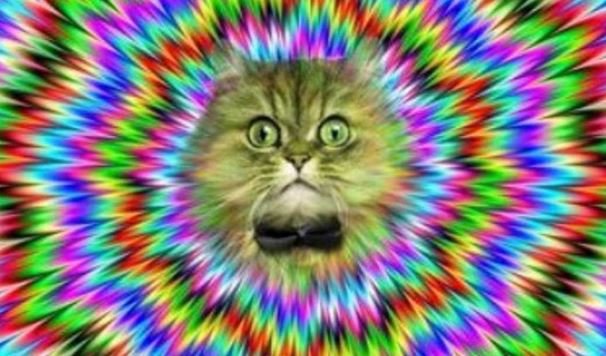Charles Bonnet Syndrome
What is Charles Bonnet syndrome?
The most serious visual hallucination due to neuro-ophthalmologic dysfunction is clinically termed as Charles Bonnet syndrome. A quick turn down of the visual capacity, which is associated with complete or partial loss of sight.

Charles Bonnet syndrome primarily affects older person. The increasing risk factors for CBS affected persons often suffering from different age related ailments, including age-related macular degeneration, cataract, glaucoma or diabetic eye disease. (1, 2, 5)
History
Charles Bonnet syndrome name originates from the name of Swiss philosopher, writer and naturalist, Charles Bonnet (1720-1792) who documented that the secondary impact of eye disease is visual hallucinations, which in independent from mental illness. This statement about the condition he identified after he experienced the feeling of his elderly grandfather, Charles Lulin. C. Lulin had visual hallucinations after he lost his vision without mental health problems or other physical health issues.
C. Lulin shared with Charles Bonnet that he could see people, birds, patterns and buildings, which had no existence in reality. This descriptive illustration was made by Charles Bonnet and the condition was named after him in the 1930s. (1,2)
Causes
The Charles Bonnet syndrome is associated with moderate or severe vision loss. The occurrence of the Charles Bonnet syndrome may be sudden or it disposed to individuals who concomitantly suffering from infections or other illness. The possible risk factors are:
- Old age
- Diabetes
- Illness that damages bilateral optic pathways
- Macular degeneration
- Galucoma that causes peripheral vision
- Optic nerve damage due to toxic exposure of methyl alcohol
- The cause of development of CBS is not clear; but it has been observed that advanced macular degeneration is closely linked with Charles Bonnet Syndrome. Experts suggested that stimulation of visual cortex due to absent or minimum stimulation of the visual system leads to differentiation hypothesis. Some researchers have doubt that CBS is the early indication of dementia.
The synonym of the CBS is “phantom vision” syndrome. Because other possible cause is explained as CBS is misfiring in the brain as happened in phantom limb syndrome. In phantom limb syndrome, neurological mixup occurs, which is quite similar as misfire in the brain.
The brain keeps on interpreting the visual imagery without getting any consequent visual input due to vision diminishing. (1, 2)
Symptoms of Charles Bonnet Syndrome
Visual hallucination is the key feature of the Charles Bonnet Syndrome and can be defined as an imminent of a peripheral object without having any real existence. The characteristic of the hallucination based on which part of the brain is activated to perception. The images obtained during hallucinations may be black and white or colored with complex structural formation.
Usually the images vary with the patient to patient during the images. Some may describe wild animals, figures, faces etc. even some cases people whom the patient had seen past could also get images of them.
Patients may also see the text or alphabets and they often try to read them.
- Only external hallucination is recognizable with CBS.
- Only visual organ is involved in hallucination without involving other organs
- The duration of hallucination may last for a few seconds to hours.
- Usually hallucination involves no personal involvement with patient
- Hallucination occurs when a patient in relaxing mood in dim lighting conditions
- Hallucination often associated with anger, anxiety, fear and distress. (3,4)
Diagnosis of Charles Bonnet Syndrome
There is no distinct diagnostic test is available for detecting Charles Bonnet Syndrome. The diagnosis of this syndrome involves the following parameters:
- Symptomatic discussion with patient
- Thorough knowledge of the medical history of the patients
- Other possible aliments which cause hallucination including dementia or Alzheimer’s disease.
- The conclusion of the diagnosis is based on patient experiences of hallucinations after visual loss without having any sign and symptoms of dementia or mental illness. This may probably associated with Charles Bonnet syndrome. (2,4,5)
Treatment of Charles Bonnet syndrome
The Charles Bonnet syndrome is a non curable condition. The aim of the treatment is to provide comfort to adjust the condition in a better way.
There are no specific medications which can control the hallucinations related to the Charles Bonnet syndrome. In some cases, doctors recommend anti epileptic, anti parkinson’s or dementia treating medications to control the hallucinations and get effective results. But these medications are having serious adverse effects, so they can be recommended only severely affected people with close monitoring.
Self management techniques
The patient can pursue the following self-management for controlling their hallucination stage at the initial stage of a hallucination commencements:
- Altering light intensity may help to disappear the hallucination
- Rotate eyeball from left to right without moving the head
- Frequent and quick blinking of eye at the starting stage of the hallucination
- Motivate yourself by performing any other task like drinking of a cup of tree or move around
- Adequate rest and sleep is very important to check frequent hallucination, because stress increases the probability of hallucination. (3,4)
References
- Understanding Charles Bonnet syndrome; Retrieve from: http://www.rnib.org.uk/eye-health/your-guide-charles-bonnet-syndrome-cbs/charles-bonnet-syndrome
- Charles Bonnet Syndrome: Why Am I Having These Visual Hallucinations?; Retrieve from: http://www.visionaware.org/info/your-eye-condition/guide-to-eye-conditions/charles-bonnet-syndrome/125
- Charles Bonnet syndrome; Retrieve from: http://www.nhs.uk/conditions/charles-bonnet-syndrome/pages/introduction.aspx
- Charles Bonnet Syndrome; Retrieve from: http://patient.info/in/doctor/charles-bonnet-syndrome-pro
- Charles Bonnet Syndrome; Retrieve from: http://www.cnib.ca/en/your-eyes/eye-conditions/Pages/Charles-Bonnet-syndrome.aspx
